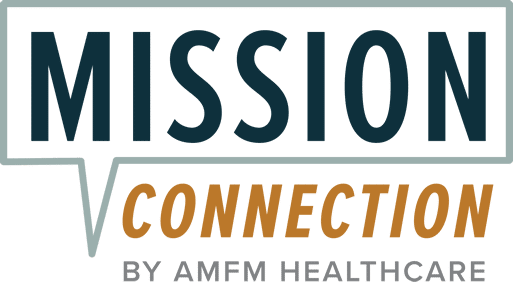What Is Perinatal Depression? Causes, Signs, and Treatment

These are usually more than fleeting worries or hormonal ups and downs. They can be perinatal depression symptoms that can begin during pregnancy or develop after the baby is born. Perinatal depression differs from short-lived baby blues and can be more intense and long-lasting.
What’s more, perinatal depression doesn’t choose who to affect and who to spare. It can be present in first-time parents, experienced mothers, and those with or without mental health struggle histories. It’s also quite common, but it often goes unspoken. Research shows that up to 50% of cases go undiagnosed.1 This is likely due to the stigma surrounding the condition and the shame or guilt of struggling during a time many believe you should be all smiles, making many reluctant to tell others how they’re feeling.
Unfortunately, staying silent means you delay getting treatment for perinatal depression, and the longer it lingers, the harder it becomes to cope. To help you understand perinatal depression and get the support you need, this guide explores:
The emotional and physical signs of perinatal depression symptoms- Common causes of perinatal depression beyond just hormones
- How to distinguish sadness from a clinical diagnosis
- Evidence-based treatment for perinatal depression and where to start
- Strategies for coping with perinatal depression

Key Takeaways
- Perinatal depression affects emotional well‑being during pregnancy and after childbirth.
- It differs from “baby blues” and may include persistent sadness or anxiety.
- Risk factors include prior depression, stress, hormonal changes, and lack of support.
- Treatment options include therapy, counseling, medication, and supportive care.
- Early recognition and help improve outcomes for parents and infants.
Table of Contents
Understanding Perinatal Depression and Its Differences From Baby Blues
The Diagnostic and Statistical Manual of Mental Disorders, fifth edition (DSM-5), states that perinatal depression includes both prenatal and postpartum depression.2 It can begin from conception to the weeks and months after the baby is born, which shows how emotional shifts can make the brain and body vulnerable during and after the pregnancy period.
It’s easy to think of perinatal depression symptoms as baby blues, also known as maternity or postpartum blues. They share similarities like tearfulness, sorrow, crying spells, irritability, mood swings, insomnia, poor appetite, anxiety, fatigue, and difficulties thinking clearly. However, the difference is in the temporary nature of baby blues. Baby blues don’t have a particular requirement for treatment, and their symptoms resolve themselves within two postpartum weeks.3
With perinatal mood disorders (including perinatal depression), there’s a more extended period and severity. They can cause significant functional impairments and interfere more deeply with your everyday life, identity, and connections.
Many women who are expecting a baby or new mothers may attempt to push through such phases and often blame stress and hormones for how they’re feeling. However, recognizing the signs as more than a rough patch is vital. Feelings of hopelessness, sadness, and detachment can persist and interfere with how you function at home or bond with your baby.
What Are the Risks and Causes of Perinatal Depression?
The condition simply emerges from a combination of biological, emotional, environmental, and psychosocial factors that build up in complex ways. It’s also important to note that you can easily find two people with entirely different circumstances experiencing the same emotional patterns during the postpartum or pregnancy stages.
One of the emotional patterns is intense hormonal changes in the postpartum period, especially the rapid drop in progesterone and estrogen levels after delivery. This alone can influence your brain chemistry and trigger mood changes.4 However, hormones are just one part of the story. Things like financial struggles, transitions in life, lower sleep quality, the stress of caring for a newborn, body image concerns, or a lack of supportive relationships can all contribute to the development of perinatal mood disorders.
Research identifies various factors with a high risk of developing perinatal depression symptoms:
Psychological: A personal history of anxiety and depression, premenstrual syndrome, reluctance to the baby’s sex, a negative attitude towards the baby, or a history of sexual abuse.- Social Situation: Domestic violence in the form of sexual, physical, or verbal spousal abuse, lack of social support, young maternal age during pregnancy, and smoking.5
- Risks in Pregnancy: Getting hospitalized when pregnant and traumatic events when giving birth, such as an emergency cesarean section, umbilical cord prolapse, in-utero meconium passage, or a preterm or low birth weight infant.
- Family Histories of Psychiatric Disorders: Researchers have found that the risk of developing postpartum depression is almost twice as high among mothers with a family history of psychiatric disorders compared with mothers without a family history.6 Factors like genetics and the environment exacerbate the risk and can include a lack of social support.
- Mental Health Stigma: When people are scared of talking about their mental issues, getting help becomes difficult or impossible. It makes it challenging to address perinatal mental health and integrate mental health care with perinatal care.
Fear and guilt make even planned pregnancies feel like a nightmare, especially if you’re going through it alone. Challenges to mental health during pregnancy and after birth are more common than many people realize and it’s important that we all acknowledge these to make healing easier.
Signs You May Have Perinatal Depression
Depression doesn’t always announce itself with evident sadness. Sometimes, you can feel numb, emotionally detached, constantly irritable, or without any sense of joy, even when you should genuinely be happy. Therefore, you may need a trained or professional lens to recognize depression during the postpartum or pregnancy period.
However, some of the perinatal depression symptoms to look out for are:
- Constantly feeling sad, empty, or worthless
- Fatigue or loss of energy
- Disturbances in sleep not associated with baby care, such as insomnia or hypersomnia
- Losing interest in everything the whole day
- Quick anger or irritability that is not like you
- Finding it hard to bond with the baby
- Emotional flatness
- Psychomotor retardation or agitation
- Changes in appetite and weight or body image concerns
- Impaired concentration or indecisiveness
- Withdrawal from loved ones
- Thinking of yourself as an inadequate or unworthy parent
Sometimes, a parent can maintain normal functioning and continue to do things like feed the baby, go to appointments, and talk with others. However, they may be feeling overwhelmed or detached on the inside. As such, it’s essential to talk about perinatal depression and mental health openly during checkups, prenatal classes, and early parenting groups.
Support networks and partners must also know what to look for. Depression isn’t laziness or lack of gratitude. It’s a medical condition that deserves attention and care.
Treatment for Perinatal Depression
Thankfully, there is treatment for perinatal depression. You can recover and thrive with the proper tools and support. Effective treatment usually starts with an appropriate professional evaluation that considers how you’re doing physically and emotionally, and the dynamics with your family or partner.
Edinburgh Postnatal Depression Scale
Psychotherapy
As a structured psychological intervention, CBT aims to identify and correct thinking patterns that are dysfunctional or negative. It’s beneficial for women with significant social pressure. With IPT, the aim is to target key interpersonal themes like how your role has transformed, disputes in that role, and sadness.
Medication
In more severe cases, some individuals may benefit from antidepressants during pregnancy for depression. Taking medications when you’re pregnant or breastfeeding can be scary since you may worry about how it will affect the growth and development of your fetus or infant. However, the FDA has approved certain antidepressants like Brexanolone, and they’re considered safe for the management of postpartum depression.10
Ensure you evaluate the risks involved and get complete information and support before making your decision.
Holistic Support Options
You may also want to consider other non-medication treatments for perinatal depression that support your holistic mental health. These could include:
- Meeting with peers and talking about your experiences
- Improving your diet and nutrition
- Strategies to get proper sleep
- Mindfulness and gentle movement exercises
Extra support may also be necessary if you’re already in the postpartum stage. You may need to consult a professional if you’re having trouble with lactation, need PTSD support after birth, or are looking for ways to deal with birth-related trauma. Remember, all experiences are different, so what might work for someone else may not work for you. As such, personalization is essential, and your healing pathways should reflect that.
How to Let in Support to Move Forward
The process of healing from perinatal depression may unfold gradually and include twists and turns instead of a straight line. It can be easy one day and unexpectedly heavy the next. Don’t think of it as a failure, but how real healing progresses.
If you’re a new or expecting parent, letting someone in may be the beginning of your recovery journey. This can be talking to a friend or therapist about your experience and acknowledging that you may need help to get through to the other side.
For long-term coping with perinatal depression, you’ll need to rebuild your confidence, restore lost connections, and learn the art of caring for your mental health. Practice supportive habits like mindful check-ins, soothing movements, and nourishing routines that can gently stabilize your nervous system and give you the emotional space you need to breathe.
Prevention is just as important as the cure. If you’ve experienced perinatal depression once, it’s natural to wonder what might happen next time. The good news is, there are many proactive ways to reduce risk. Preventing perinatal depression doesn’t mean eliminating every stressor – it means increasing the protective factors around you. This might include:
- Beginning therapy during pregnancy,
- Involving a doula or mental health provider early on,
- Building a postpartum care plan with emotional check-ins, or
- Joining a peer group so you’re never navigating alone.
Emotional preparation can be just as vital as physical planning. And know that access to consistent, compassionate support for perinatal depression changes everything. When you have people who listen without judgment and providers who see the whole picture and not just the symptoms, you don’t just survive the challenging moments. You come through them stronger, more connected, and more equipped to thrive in the next chapter of your journey.
Consult Mission Connection for Perinatal Depression Support
You may feel like you’re the only one going through it when dealing with perinatal depression. However, you’re not. There are millions of parents experiencing what you might be feeling right now every year. From exhaustion and guilt to fear and disconnection, they go through it all, and thanks to proper support, many come out on the other side.
At Mission Connection, we specialize in evidence-informed, compassionate care for women navigating the emotional shifts of postpartum life and pregnancy. We’re here to give a helping hand, whether you’re looking for safe medication options, perinatal depression therapy, group support, or just someone to talk to.
We believe every parent deserves to feel supported and not judged when mental health becomes a challenge.
Get in touch today to learn more about how our team can walk beside you through this chapter with empathy, clarity, and care.

References
- Carlson, K., Mughal, S., Azhar, Y., & Siddiqui, W. (2025). Perinatal depression. In StatPearls. StatPearls Publishing. https://www.ncbi.nlm.nih.gov/books/NBK519070/
- Serati, M., Redaelli, M., Buoli, M., & Altamura, A. C. (2016). Perinatal Major Depression Biomarkers: A systematic review. Journal of Affective Disorders, 193, 391–404. https://www.sciencedirect.com/science/article/abs/pii/S0165032715311265?via%3Dihub
- Chechko, N., Stickel, S., & Votinov, M. (2023). Neural responses to monetary incentives in postpartum women affected by baby blues. Psychoneuroendocrinology, 148(105991), 105991. https://www.sciencedirect.com/science/article/pii/S0306453022003328
- Standeven, L. R., McEvoy, K. O., & Osborne, L. M. (2020). Progesterone, reproduction, and psychiatric illness. Best Practice & Research. Clinical Obstetrics & Gynaecology, 69, 108–126. https://www.sciencedirect.com/science/article/abs/pii/S1521693420300912
- Konjevod, M., Gredicak, M., Vuic, B., Tudor, L., Nikolac Perkovic, M., Milos, T., Svob Strac, D., Pivac, N., & Nedic Erjavec, G. (2023). Overview of metabolomic aspects in postpartum depression. Progress in Neuro-Psychopharmacology & Biological Psychiatry, 127(110836), 110836. https://www.sciencedirect.com/science/article/abs/pii/S0278584623001227?via%3Dihub
- Zacher Kjeldsen, M.-M., Bricca, A., Liu, X., Frokjaer, V. G., Madsen, K. B., & Munk-Olsen, T. (2022). Family history of psychiatric disorders as a risk factor for maternal postpartum depression: A systematic review and meta-analysis: A systematic review and meta-analysis. JAMA Psychiatry (Chicago, Ill.), 79(10), 1004–1013.https://pmc.ncbi.nlm.nih.gov/articles/PMC9386615/
- Tosto, V., Ceccobelli, M., Lucarini, E., Tortorella, A., Gerli, S., Parazzini, F., & Favilli, A. (2023). Maternity blues: A narrative review. Journal of Personalized Medicine, 13(1), 154. https://pmc.ncbi.nlm.nih.gov/articles/PMC9863514/
- Jiang, X., Li, H., Wang, D., Shan, L., Wang, F., & Kang, Y. (2022). Efficacy of nondrug interventions in perinatal depression: A meta-analysis. Psychiatry Research, 317(114916), 114916. https://www.sciencedirect.com/science/article/abs/pii/S0165178122005078
- Senda, M., Johnson, K., Taylor, I., Jensen, M., Flynn, H., & Kozel, F. A. (2023). Accelerated transcranial magnetic stimulation provided rapid improvement in depressive, anxiety, trauma, and pain symptoms in a woman experiencing postpartum depression. The Journal of ECT, 39(3), e14–e15. https://journals.lww.com/ectjournal/citation/2023/09000/accelerated_transcranial_magnetic_stimulation.31.aspx
- Hutcherson, T. C., Cieri-Hutcherson, N. E., & Gosciak, M. F. (2020). Brexanolone for postpartum depression. American Journal of Health-System Pharmacy: AJHP: Official Journal of the American Society of Health-System Pharmacists, 77(5), 336–345. https://academic.oup.com/ajhp/article-abstract/77/5/336/5740317?redirectedFrom=fulltext
FAQs About Perinatal Depression
Perinatal depression is a mood disorder occurring during pregnancy or within the first year after birth, affecting daily functioning and well‑being.
Baby blues are short‑lived mood changes after birth; perinatal depression is more intense and lasts longer, often needing professional support.
Symptoms can include persistent sadness, anxiety, irritability, loss of interest, low energy, and trouble sleeping or concentrating.
Yes — treatment options include therapy, support groups, and in some cases medication, tailored to each individual’s needs.
Seek professional help if symptoms persist, disrupt daily life, or include thoughts of self‑harm. Mission Connection offers compassionate support and personalized care for those experiencing perinatal depression.
- Signs of Treatment-Resistant Depression
- Signs of Depression Relapse
- Depression-Related Sleep Issues
- Depression Symptom Checklist
- ICD-10 Criteria for Depression
- Major Depressive Disorder (MDD) Symptoms
- Depression Symptoms
- Depression Self-Test
- PHQ-9 Depression Test
- Warning Signs of Depression
- Types of Depression
- Best Therapies for Depression
- Talk Therapy for Depression
- Telehealth for Depression
- Personalized Therapy for Depression
- Holistic Treatment for Depression
- Online Therapy for Depression
- Effective Treatments for Depression
- Medications for Depression
- Treatment-Resistant Depression Options
- Depression Relapse Prevention





